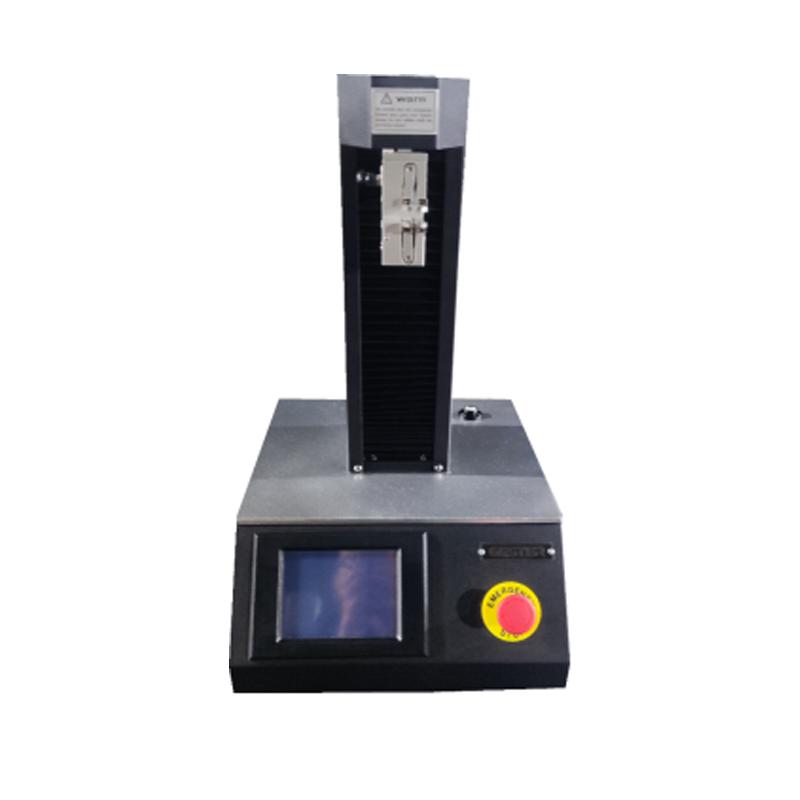All You Need to Understand About Robotic Vision and Its Applications in Advanced Optical Dimension Systems
Robotic vision represents a significant development in the junction of computer vision, man-made knowledge, and artificial intelligence. This modern technology enhances the accuracy of optical dimension systems, allowing real-time data analysis and enhanced quality assurance. Its influence extends multiple markets, from making to medical care. However, the developing landscape of robotic vision increases questions regarding future capabilities and applications (optical fibre diameter analyser). What innovations exist in advance in this transformative area?
Recognizing Robotic Vision: Secret Concepts and Technologies
Robotic vision encompasses the innovations and methodologies that allow makers to translate and recognize aesthetic information from their environment. This field combines components of computer vision, fabricated intelligence, and artificial intelligence to assist in computerized decision-making based on aesthetic data. Key principles consist of image processing, which includes the improvement and evaluation of images to draw out significant functions, and object acknowledgment, which allows machines to recognize and categorize items within a scene.

The Combination of Robotic Vision With Optical Dimension Equipments
As sectors increasingly require precision and efficiency, the assimilation of robot vision with optical dimension systems has emerged as a transformative method. This synergy allows robots to view and analyze their surroundings, boosting the ability of optical measurement systems to assess and evaluate things with unequaled precision. By furnishing optical sensing units with innovative imaging technologies, robot vision enables real-time information collection and processing, assisting in immediate adjustments to measurement criteria.
Additionally, the mix empowers automated systems to spot variants in measurements, surface high quality, and placement, which are crucial in quality assurance processes. Boosted formulas, such as artificial intelligence, further enhance this integration by improving the systems' capability to adjust to various environments and scenarios. Subsequently, the assimilation not just enhances dimension procedures yet likewise lessens mistakes, ensuring that products fulfill rigid market standards, therefore solidifying the function of robot vision in the future of optical measurement systems.
Applications of Robotic Vision in Manufacturing
In modern-day manufacturing atmospheres, the use of vision systems has actually transformed manufacturing procedures by making it possible for devices to do tasks with remarkable accuracy and rate. Robotic vision systems are increasingly employed for high quality control, where they evaluate products for defects and assurance adherence to specifications. These systems make use of video cameras and advanced formulas to analyze products in real-time, significantly minimizing the click this link danger of human mistake.
Furthermore, robot vision promotes automation in setting up lines, allowing robots to properly determine elements and construct them with very little downtime. This innovation also boosts inventory management, as vision systems can check supply degrees and detect disparities, guaranteeing a smooth supply chain.
Additionally, robot vision help in the application of smart factories, where information from vision systems can be integrated with other innovations to maximize process. Overall, the applications of robotic vision in making demonstrate its vital role in boosting efficiency, quality, and performance throughout various sectors
Robotic Vision in Medical Care: Reinventing Patient Care

In rehabilitation, robotic vision aids in monitoring client progress and tailoring treatment sessions to private requirements. It supports clinical experts by automating jobs such as information collection and patient monitoring, permitting even more time to concentrate on direct person interaction. Additionally, robot vision enhances telemedicine by allowing remote diagnosis and virtual examinations, connecting the gap between patients and medical care companies. Overall, the application of robotic vision in medical care is reinventing client treatment, causing boosted outcomes, efficiency, and view it person satisfaction.
Future Trends and Advancements in Robotic Vision Innovation
The fast evolution of robotic vision innovation guarantees to even more boost its applications across different markets, consisting of healthcare. Future patterns suggest a considerable shift in the direction of including synthetic intelligence and maker discovering, making it possible for systems to pick up from substantial datasets and enhance accuracy gradually. Boosted sensor modern technologies and deep knowing formulas are expected to improve item recognition capacities, enabling robotics to analyze complicated environments a lot more properly.

The combination of augmented reality (AR) with robot vision will likely transform just how robotics help in medical treatments and diagnostics. This harmony will certainly facilitate real-time information visualization, enhancing decision-making processes. In addition, miniaturization of parts will certainly bring about more compact and versatile robotic vision systems appropriate for a selection of jobs. As these advancements unfold, industries will certainly witness enhanced automation and effectiveness, solidifying robot vision as a cornerstone of innovative technological remedies.
Often Asked Inquiries
What Are the Main Elements of a Robotic Vision System?
The main parts of a robot vision system include video cameras for picture capture, cpus for data evaluation, algorithms for interpretation, and actuators for motion. Together, these aspects make it possible for robotics to perceive and communicate with their setting successfully.
How Does Robotic Vision Improve Accuracy in Measurements?
Robotic vision boosts measurement accuracy by making use of innovative imaging innovations, allowing specific things discovery and spatial analysis. This ability decreases human error, raises repeatability, and permits real-time modifications, inevitably boosting general measurement integrity and efficiency.
What Industries Benefit Most From Robotic Vision Technology?
Various markets profit significantly from robotic vision technology, consisting of manufacturing, health care, agriculture, visit homepage and logistics. These markets make use of boosted accuracy, performance, and automation, causing boosted performance and decreased functional prices in their corresponding processes.
Can Robotic Vision Solutions Work in Low-Light Issues?
Robotic vision systems can without a doubt work in low-light problems, utilizing advanced sensing units and formulas to improve image clarity. This ability permits them to execute properly in numerous environments, including industrial and surveillance applications, also with minimal illumination.
What Are the Prices Connected With Implementing Robotic Vision?
The prices connected with implementing robotic vision vary substantially, affected by components such as cams, software application, and integration. Additional expenses include maintenance, training employees, and possible upgrades to existing systems, which can accumulate in time.